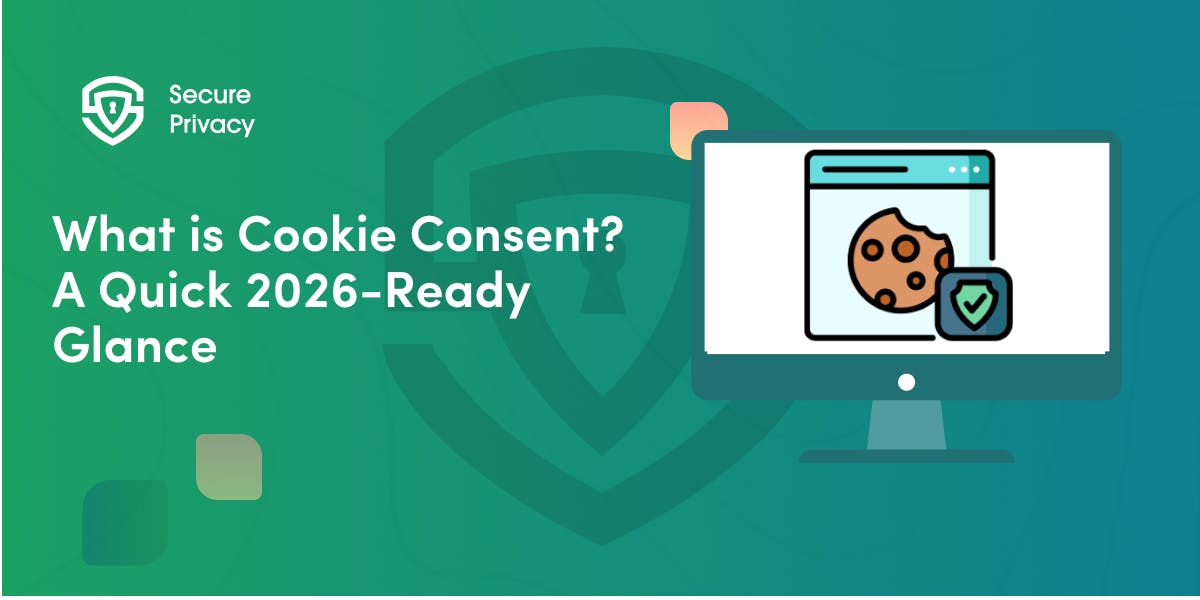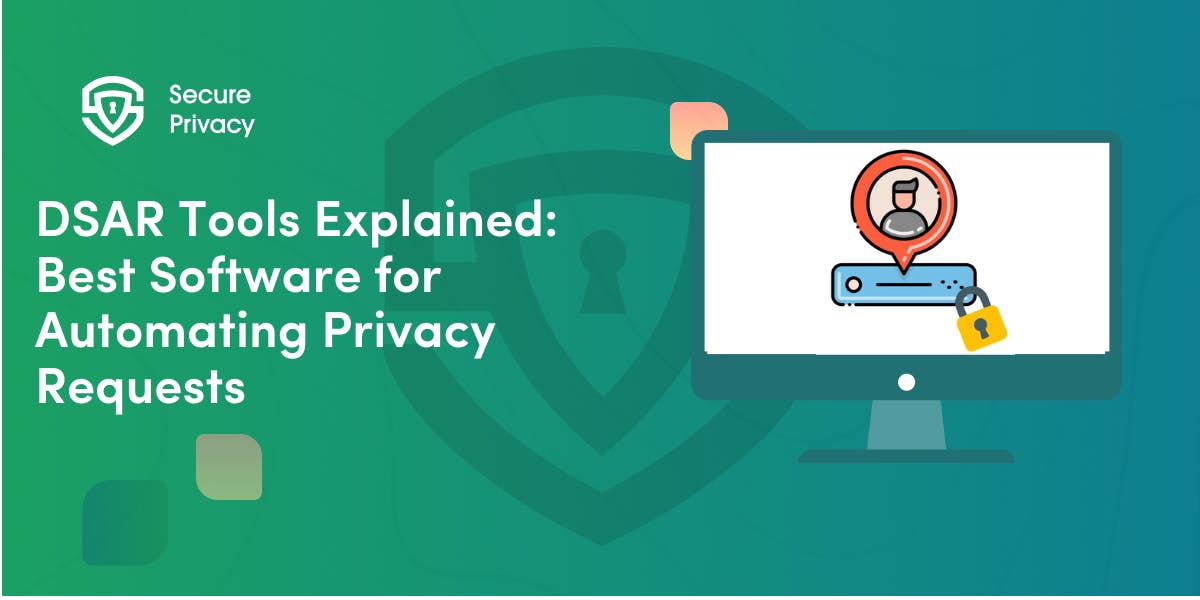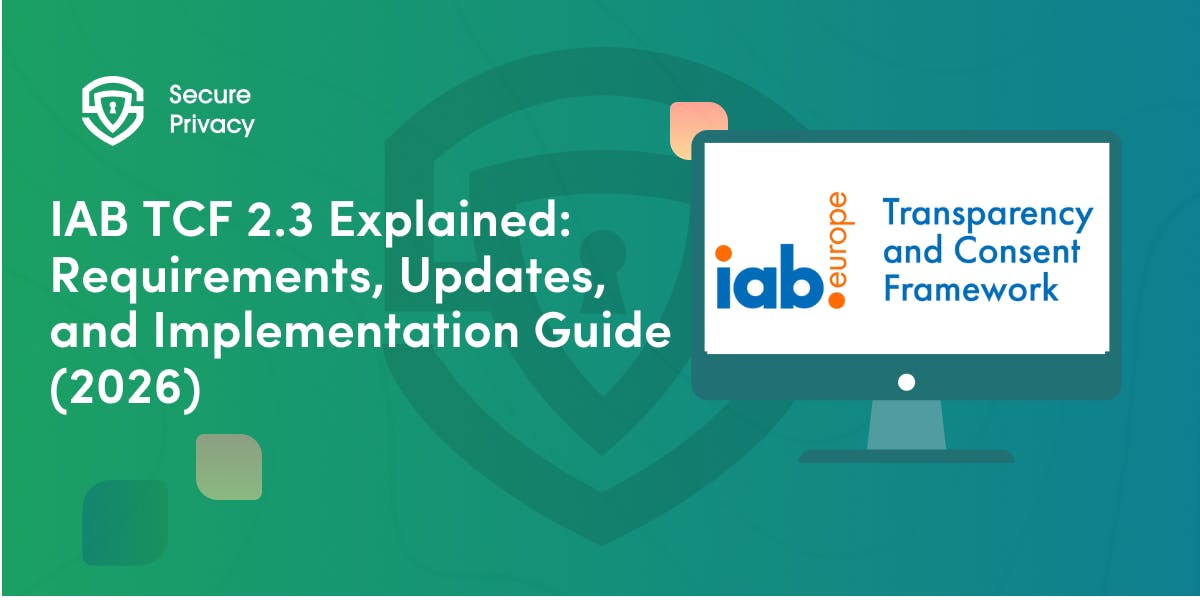Consent Management API Integration: Complete Guide for Developers & Compliance Teams
Your development team is drowning in privacy requirements while struggling to implement compliant consent management across web, mobile, and server-side systems. Tag-only implementations are breaking, consent states aren't syncing, and compliance teams can't generate the audit trails regulators demand.
Consent management API integration transforms fragmented privacy implementations into centralized, auditable systems that support GDPR, CCPA, IAB TCF, and Google Consent Mode v2 requirements. Modern APIs provide the technical foundation for scalable privacy compliance while maintaining seamless user experiences.
In this comprehensive guide, you'll learn how to architect privacy APIs across your entire technology stack, implement compliance frameworks like TCF and GPP, and build monitoring systems that prove regulatory compliance through real-world implementation patterns.

Prioritizing user privacy is essential. Secure Privacy's free Privacy by Design Checklist helps you integrate privacy considerations into your development and data management processes.
Why Use an API for Privacy Management vs. Tag-Only
Tag-only implementations create significant technical and compliance limitations that API-based approaches solve systematically. Traditional JavaScript-only solutions cannot provide server-side enforcement, cross-platform synchronization, or comprehensive audit trails required for enterprise compliance.
API-based privacy management enables centralized state management across web applications, mobile apps, and server-side systems. This architecture ensures consistent privacy enforcement regardless of user touchpoints while providing the audit documentation regulatory frameworks require. (Cookie consent automation is a foundational aspect of this.)
The fundamental advantages include real-time synchronization, server-side enforcement capabilities, comprehensive logging, and platform-agnostic implementation patterns. APIs also enable advanced features like webhooks, bulk export capabilities, and automated compliance reporting that tag-only solutions cannot provide.
Most critically, API integration supports omnichannel privacy management where users can modify preferences on one platform and have those changes immediately reflected across all organizational touchpoints.
Core Concepts & Data Model
User Identity and Privacy States
Modern APIs utilize multiple identifier strategies to track preferences across platforms and devices. Primary identifiers include authenticated user IDs, device identifiers, and pseudonymous tracking tokens that maintain privacy while enabling persistence.
The core data model centers on purposes, categories, and vendor-specific permissions that map to regulatory frameworks. Each record includes granular preferences for analytics, marketing, functional, and advertising purposes with timestamps and legal basis documentation.
Categories typically include strictly necessary, functional, analytics, marketing, and advertising classifications that align with GDPR lawful processing bases and CCPA business purpose categories. The API must support both opt-in and opt-out mechanisms depending on applicable regulations and user locations.
Storage and Persistence Strategies
Privacy APIs employ multiple storage layers including browser-based cookies and localStorage for immediate access, server-side databases for authoritative records, and distributed caching for performance optimization.
Browser storage enables immediate checking for client-side scripts while server storage provides tamper-proof audit trails and cross-device synchronization. The API must maintain consistency between storage layers while handling conflicts and ensuring data integrity.
Architecture Patterns
Client-Side API Integration
Client-side implementations provide immediate privacy management capabilities through JavaScript APIs that integrate with existing web applications. These patterns enable real-time collection, preference updates, and downstream system notifications without server-side dependencies.
// Initialize privacy management API
const privacyAPI = new ConsentManager({
apiKey: 'your-api-key',
region: 'eu',
userId: 'user-123'
});
// Check current status and update preferences
const status = await privacyAPI.getConsent();
await privacyAPI.updateConsent({
analytics: true,
marketing: false
});
Server-Side Enforcement
Server-side patterns enable enforcement at the infrastructure level, ensuring compliance regardless of client-side implementation. This architecture proves essential for organizations requiring absolute privacy compliance and comprehensive audit trails.
Multi-Platform Synchronization
Organizations with web applications, mobile apps, and server-side systems require sophisticated synchronization patterns that maintain preference consistency across all platforms. This architecture enables users to modify preferences on any platform with immediate cross-platform updates.
API Surface You'll Need
Essential Endpoints and Operations
Comprehensive APIs provide standardized endpoints for all lifecycle operations. The core API surface includes creation, retrieval, updates, deletion, and bulk export capabilities with appropriate authentication and rate limiting.
Authentication and Security
Enterprise APIs implement OAuth 2.0 or API key authentication with appropriate scope controls and rate limiting. Security measures include request signing, idempotency keys, and comprehensive audit logging.
Webhook Integration
Webhooks enable real-time change notifications to downstream systems, ensuring immediate compliance across all organizational platforms. Webhook payloads include signed verification headers and comprehensive change details.
Compliance Mapping
GDPR and CCPA Integration
API implementations must map purposes to specific regulatory requirements for GDPR lawful bases and CCPA business purposes. This mapping ensures automated compliance while supporting different regional requirements through single API interfaces.
GDPR compliance requires explicit consent for non-essential purposes, documented legal bases, and comprehensive audit trails. CCPA implementation focuses on opt-out rights for data sales and sharing with clear disclosure requirements.
IAB TCF and GPP String Management
The Interactive Advertising Bureau's Transparency and Consent Framework provides standardized management for programmatic advertising. API integration must support TCF string generation, validation, and real-time updates for advertising ecosystem compliance.
Google Consent Mode v2 Implementation
Google Consent Mode v2 integration requires mapping consent API states to specific Google consent parameters. This integration ensures Google services respect user preferences while maintaining measurement capabilities.
Platform Integration
Web Integration
Web integration begins with geographic detection to determine applicable privacy regulations and appropriate collection mechanisms. The API must support location-based requirements while maintaining consistent user experiences.
Implementation requires robust API integration that handles network failures, timeout conditions, and provides immediate feedback to users. The system must support both synchronous and asynchronous processing patterns.
Mobile Integration (iOS/Android)
Mobile applications require specialized management through native SDKs that support offline scenarios, local storage, and synchronization with web states. Native implementations must integrate with platform-specific privacy controls. For Google Consent Mode specifically on mobile, see our [Google Consent Mode on Mobile: A Practical Guide for Marketers and Developers].
iOS Swift Implementation:
class ConsentManager {
private let apiClient: ConsentAPIClient
func updateConsent(_ consent: ConsentPreferences) async throws {
try localStorage.save(consent)
try await apiClient.updateConsent(consent)
}
}
Server-Side and Edge Implementation
Server-side enforcement provides the highest level of compliance assurance by blocking data processing at the infrastructure level before it reaches analytics or advertising systems.
class EdgeConsentEnforcer:
async def enforce_consent(self, user_id: str, purpose: str) -> bool:
# Check cache first, then API
cached_result = self.cache.get(f"consent:{user_id}:{purpose}")
if cached_result is not None:
return cached_result == 'true'
consent_data = await self.api.get_consent(user_id)
return consent_data.get('purposes', {}).get(purpose, False)
Events, Webhooks, and Downstream Sync
Real-Time Propagation
Webhook integration enables immediate propagation of changes to marketing automation platforms, customer data platforms, and analytics systems. This real-time synchronization ensures compliance across all organizational systems without delays.
Idempotent Processing
Webhook consumers must implement idempotent processing to handle duplicate deliveries and ensure exactly-once processing of changes. This pattern prevents data inconsistencies and ensures reliable synchronization.
Security, Privacy & Resilience
Authentication and Authorization
Enterprise APIs implement OAuth 2.0 with appropriate scopes and role-based access controls that align with organizational privacy governance. Authentication mechanisms must support both human users and automated systems.
Data Protection and Encryption
APIs must implement comprehensive data protection including encryption at rest and in transit, tokenization of sensitive identifiers, and geographic data residency controls that comply with applicable regulations.
Service Level Agreements
Production APIs require comprehensive monitoring, alerting, and service level agreements that ensure high availability and regulatory compliance. Monitoring systems must track processing rates, API response times, and compliance metrics.
Testing & QA Playbook
Automated Testing
APIs require comprehensive testing that covers functional requirements, compliance validation, and performance characteristics. Automated testing suites must validate collection, storage, retrieval, and synchronization across multiple platforms.
Cross-Platform Testing
Implementation must function consistently across browsers, devices, and platforms. Testing protocols should cover major browser versions, mobile platforms, and assistive technologies.
Performance Testing
APIs must maintain performance under high traffic loads while ensuring rapid response times that don't degrade user experience. Load testing should simulate realistic traffic patterns including peak collection periods.
Analytics & Optimization
Rate Monitoring
Organizations must continuously monitor rates across regions, traffic sources, and user segments to identify optimization opportunities and potential compliance issues. Analytics systems should track both acceptance and granular purpose-specific patterns.
A/B Testing Framework
Optimization requires systematic A/B testing of banner designs, copy, and user flows. Testing frameworks must maintain compliance while enabling data-driven improvements to collection rates.
Vendor Selection Checklist
Technical Requirements
Selecting appropriate API vendors requires systematic evaluation of technical capabilities, compliance features, and integration requirements. Core capabilities include RESTful APIs, webhook reliability, SDK availability, and performance guarantees.
Cost Structure Analysis
Pricing varies significantly across vendors with different models including per-page-view, per-domain, per-user, and enterprise licensing. Organizations must evaluate total cost of ownership including implementation, maintenance, and compliance costs.
Implementation Timeline & RACI
Project Planning
API implementation typically requires 8-12 weeks for comprehensive enterprise deployments. Project timelines must account for technical integration, compliance validation, testing, and stakeholder training.
Phase 1: Planning and Design (Weeks 1-2)
- Requirements gathering and compliance framework mapping
- Technical architecture design and integration planning
Phase 2: Development and Integration (Weeks 3-6)
- API integration across web, mobile, and server-side systems
- Webhook configuration and downstream system integration
Phase 3: Testing and Validation (Weeks 7-9)
- Cross-platform compatibility testing
- Compliance validation and legal review
Phase 4: Deployment and Monitoring (Weeks 10-12)
- Production deployment with gradual rollout
- Monitoring system configuration and team training
How Secure Privacy Delivers Enterprise-Grade Excellence
Enterprise development teams choose Secure Privacy for its comprehensive API-first architecture that simplifies complex management while ensuring bulletproof compliance across global regulations. Our platform provides the technical depth developers need with the compliance automation privacy teams require. (Beyond traditional mobile platforms, connected device ecosystems including Android TV require specialized API design for consent propagation and preference synchronization.)
Our API offers industry-leading performance with sub-100ms response times, comprehensive webhook delivery guarantees, and native support for IAB TCF, GPP, and Google Consent Mode v2 integration. Unlike traditional platforms requiring extensive custom development, Secure Privacy provides production-ready SDKs and detailed implementation guides as well as consent management for AndroidTV and tvOS.
The platform's advanced monitoring and analytics capabilities provide real-time visibility into performance, compliance status, and system health. Our transparent pricing and comprehensive developer resources ensure predictable implementation costs and reliable ongoing operations.
Frequently Asked Questions
What is a consent management API and why use it over tag-only setups?
An API provides programmatic access to collection, storage, and enforcement capabilities across web, mobile, and server-side systems. Unlike tag-only implementations that rely solely on JavaScript, APIs enable server-side enforcement, cross-platform synchronization, comprehensive audit trails, and integration with backend systems.
How do I map Google Consent Mode v2 with a CMP API?
Google Consent Mode v2 integration requires mapping API states to specific Google parameters (ad_storage, analytics_storage, etc.). The API should provide real-time updates that trigger gtag('consent', 'update') calls with appropriate parameter values based on user preferences.
What's the difference between TCF v2.2 and GPP strings?
IAB TCF v2.2 focuses specifically on programmatic advertising within the European regulatory framework, while GPP provides a unified framework for multiple privacy regulations globally. TCF strings encode vendor and purpose consent for advertising, while GPP strings support broader privacy compliance.
How do I sync web and mobile consent states?
Web and mobile synchronization requires a centralized API that serves as the authoritative source for user preferences. Mobile apps should register device identifiers with user accounts, implement offline queuing, and use webhook subscriptions or periodic polling to maintain current states.
What should a consent audit log contain?
Comprehensive audit logs must include user identifiers (hashed for privacy), timestamps, IP addresses (hashed), user agents, choices made, legal basis for processing, geographic location, collection method, and any subsequent changes. Logs should be tamper-evident, encrypted, and retained according to applicable requirements.
How do webhooks fit into consent revocation flows?
Webhooks enable immediate propagation of changes to downstream systems including marketing automation platforms, analytics systems, and customer data platforms. When users withdraw consent, webhooks trigger suppression list updates, data processing stops, and audit trail creation across all integrated systems.
What SLAs and rate limits should I expect from a CMP API?
Enterprise APIs typically provide 99.9% uptime guarantees, sub-200ms response times for checks, and rate limits of 1000+ requests per minute per API key. Webhook delivery should guarantee at-least-once delivery with exponential backoff retry policies.
Get Started For Free with the
#1 Cookie Consent Platform.
No credit card required

What is Cookie Consent? A Quick 2026-Ready Glance
Your website loads. Cookies track users. But without proper cookie consent, you're violating GDPR — risking fines up to €20 million or 4% of global revenue. Cookie consent is the legally required mechanism by which websites obtain explicit user approval before deploying non-essential tracking technologies. This requirement stems from GDPR Article 4(11) and the ePrivacy Directive, mandating that consent must be freely given, specific, informed, and unambiguous.
- Legal & News

DSAR Tools Explained: Best Software for Automating Privacy Requests
You're drowning in data subject access requests. Manual searches through dozens of systems miss regulatory deadlines and expose organizations to fines starting at $2,500 per violation. The solution? DSAR tools — purpose-built software that automates the entire process of responding to data subject access requests, from intake to delivery.
- Legal & News

IAB TCF 2.3 Explained: Requirements, Updates, and Implementation Guide (2026)
Your ad revenue dropped 40% overnight. Google stopped bidding on your inventory. Your DSP partners flagged your traffic as non-compliant. The culprit? An outdated TCF 2.2 consent string after the February 2026 enforcement deadline.
- Legal & News
- Cookie Consent
